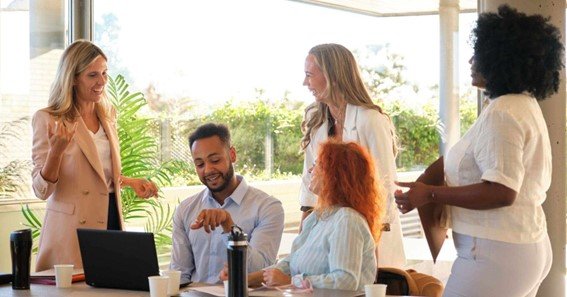Effective team dynamics refer to the positive interactions, behaviors, and communication styles that drive a team toward success. Understanding and fostering effective dynamics can significantly impact a team’s productivity, morale, and overall performance. Below are several examples of effective team dynamics, showcasing what makes teams operate smoothly and achieve their goals.
Key Examples of Effective Team Dynamics
- Open and Honest Communication: Teams with strong dynamics prioritize clear and transparent communication. This involves active listening, addressing conflicts openly, and providing constructive feedback. Teams that communicate well tend to resolve issues faster and collaborate efficiently, creating an environment where everyone feels heard and valued.
- Mutual Trust and Respect: Trust is the cornerstone of any high-functioning team. Effective teams foster trust by respecting diverse opinions, valuing contributions, and holding each other accountable. This trust enables delegation and empowers members to take initiative without the fear of being micromanaged.
- Clear and Common Goals: Successful teams have a unified vision, where all members understand the objectives and their roles in achieving them. Setting clear goals helps align the team’s efforts, ensuring everyone is moving in the same direction. This shared purpose boosts motivation and drives collective success.
- Adaptability and Flexibility: The ability to adapt to change is crucial for maintaining effective team dynamics. High-performing teams are agile, willing to adjust their strategies, and able to handle unexpected challenges. They embrace feedback, pivot when necessary, and support each other during transitions.
- Celebrating Success and Learning from Failures: Teams that recognize achievements, no matter how small, and learn from mistakes tend to maintain high morale and motivation. Acknowledging individual and team successes fosters camaraderie, while reflecting on setbacks encourages growth and improvement.
FAQ
- Why is communication important for team dynamics?
Communication is vital because it ensures that all members are aligned, reduces misunderstandings, and promotes a positive working environment. Effective communication can resolve conflicts and foster collaboration. - How does trust impact team dynamics?
Trust allows team members to delegate responsibilities confidently, share ideas freely, and support each other, leading to a more cohesive and effective team. A lack of trust can hinder cooperation and create tension. - What role does adaptability play in team success?
Adaptability helps teams navigate challenges and adjust to changes, ensuring they remain productive even under unexpected circumstances. It promotes resilience and creative problem-solving. - How can teams establish clear goals?
Teams can set clear goals by involving all members in the planning process, defining specific targets, and regularly reviewing progress. This shared understanding keeps the team focused and motivated. - Why is celebrating achievements important for team dynamics?
Celebrating achievements boosts team morale, reinforces positive behaviour, and encourages continued effort. It also strengthens the bond among team members, fostering a supportive and motivated environment.
Effective team dynamics involve a mix of communication, trust, adaptability, and shared purpose. These elements create an environment where collaboration thrives, leading to successful outcomes. For more insights on fostering positive team dynamics, explore resources like The Future World of Work, Kadence, and Officer.
Uncover something cool here i-became-a-level-999-demon-king










